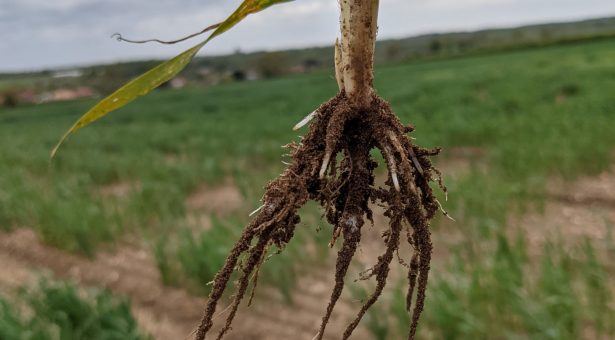WISH-ROOTS; Wheat roots in soil health

The WISH-ROOTS project is a cross-institute consortium to enhance the potential beneficial effects of wheat cultivation on soil health.
The project hopes identify varieties for farmers that support a more sustainable use of land improving soil microbial biodiversity, N cycling, and soil structure by:
- identifying key traits associated with functionality of microbial and fungal guilds in the rhizosphere and root system architectural traits
- finding the genes, genomic regions or metabolic pathways in wheat that can benefit soil health
- developing genetic tools for breeding to introduce these beneficial traits in commercial cultivar
The project has five areas of activity:
1 – Semi-field root phenotyping
WISH-ROOTS will phenotype bread and durum wheat panels for root traits that can have a beneficial impact in soil structure and nitrogen cycling and uptake. The project will screen two collections of wheat for root morphological parameters and root exudates.
Recombinant inbred lines (RILs) selected from preliminary data will be phenotyped.
The Germplasm Resource Unit and UniBo will provide bread and durum wheat germplasm collections as well as RILs obtained from crosses of landraces and modern cultivars.
Collections will include landraces and sequenced lines previously highlighted by their ability to control nitrification in the rhizosphere, landrace selections previously assessed on field conditions over the last three years and preliminary assessed for agronomic value, biomass production and root traits.
2 – Field phenotyping
Researchers will investigate beneficial impacts of traits associated with wheat root architecture and root exudates on target markers of soil health including:
- Physical properties: soil aggregation, pore structure, and water retention
- Soil nitrogen (N) fertility and supply: N cycling and balanced N supply for plant uptake.
A total of 20 wheat accessions will be tested in each field trial. Locally adapted elite cultivars (eg. current most popularly grown cultivars for each location) will be grown as check for bread and durum wheat.
The trial will be run in parallel in six different locations of the partners allowing for a valuable comparison across soil types and climates in Europe, China, and South Africa.
Similarly, the sampling and analysis strategy will be optimized to facilitate traceability and data comparison across the different partners involved. Soil features and environmental conditions will be monitored throughout the growing cycles in all experiments following protocols provided and optimized by the partners.
3 – Rhizosphere microbiome
The aim of this research area is to analyse the rhizosphere microbiome for wheat landraces and elite cultivars grown in controlled and field conditions. The research will investigate the link between the rhizosphere microbiome composition and functionality with wheat root traits and wheat genomic variation to assess the taxonomical and functional core of the rhizosphere microbiome associated to wheat nitrogen cycling and uptake under field conditions in three continents.
The data sets collected will be used to functionally validate rhizosphere microbiome members associated with root traits and nitrogen cycling under controlled and field conditions and measure ecological changes in the rhizosphere microbiome for the wheat landraces and cultivars studied.
Rhizosphere soil will be collected to examine the core microbiome associated with beneficial functions contributing to soil health. Metagenomics and microbial cultivations will be carried out for a subset of samples selected based on the results from the aforementioned analysis. This will confirm the variation in microbiome functionality across wheat varieties. The variability in functionality will be linked to the soil health markers.
4 – Data analysis and management
This area will coordinate and perform exploratory and mechanistic analyses for the data sets collated in the other research areas to address the research objectives of the WISH-ROOTS project: identify genomic regions in wheat linked to root traits that can enhance soil health (QTLs) and generate predictive models for beneficial root-soil interactions.
5 – Project management, communication, and stakeholders network development
The research objectives of the WISH-ROOTS project have been built through collaboration of the partners and benefit from their complementary expertise.
A stakeholder network will be built at national and international levels gathering relevant stakeholders with a strong interest in restoration and preservation of agricultural soil through breeding beneficial traits in commercial wheat and seed production. The network will be developed from current collaborators or relevant candidates already identified.
A WISH-ROOTS portal will provide stakeholders with access to the WHISH-ROOTS portal dataset and expert summaries for soil quality and health.
A repository for data derived from field trials and controlled environment data will be established (developed by Designing Future Wheat). We aim to make this repository public during the final year of the project.
Researchers will also create a repository for wheat microbiome with main exudate, core microbiome and networks analysis outcomes.
Find out more about the project on the WISH-ROOTS website.
Follow WISH-ROOTS on Twitter
